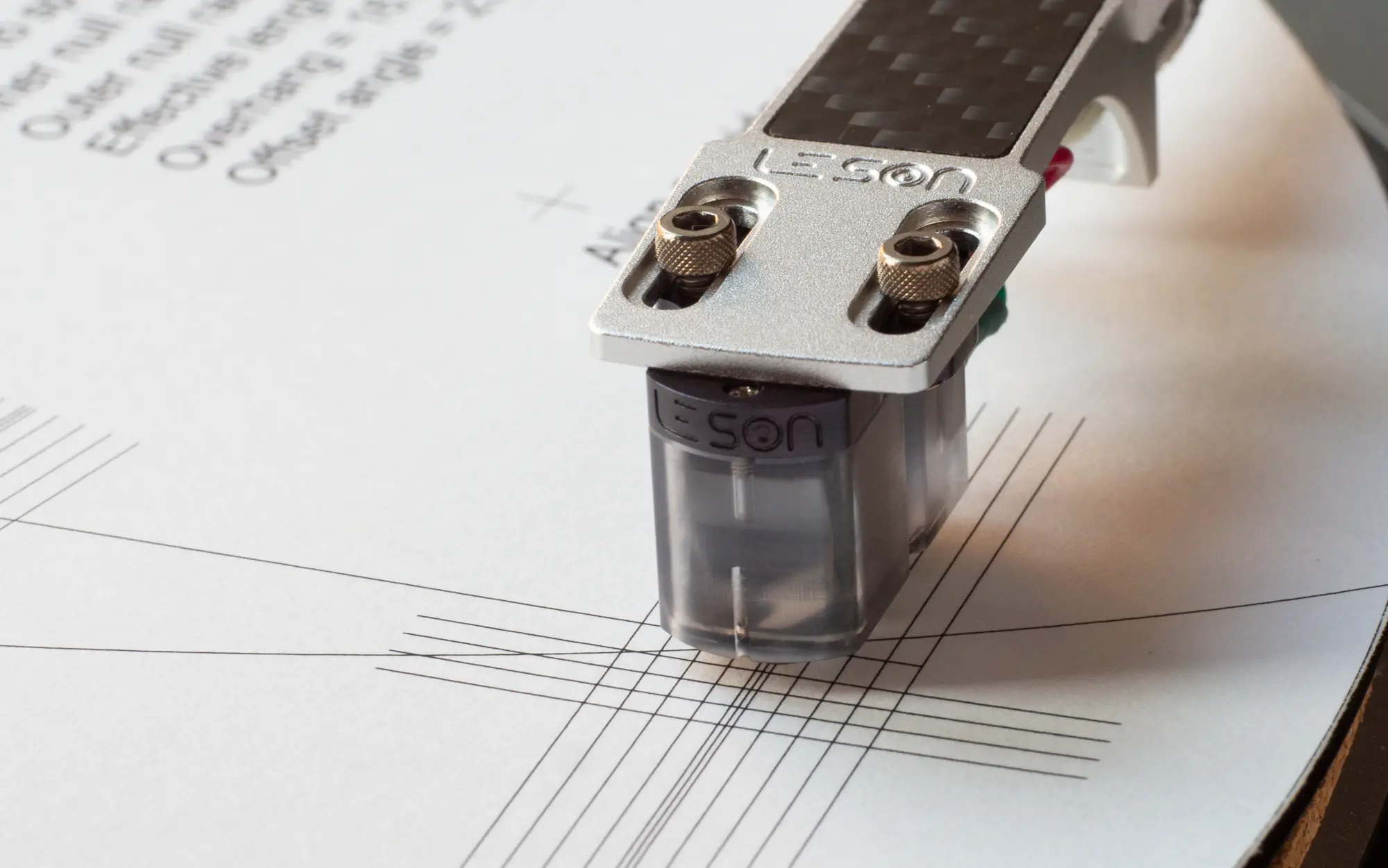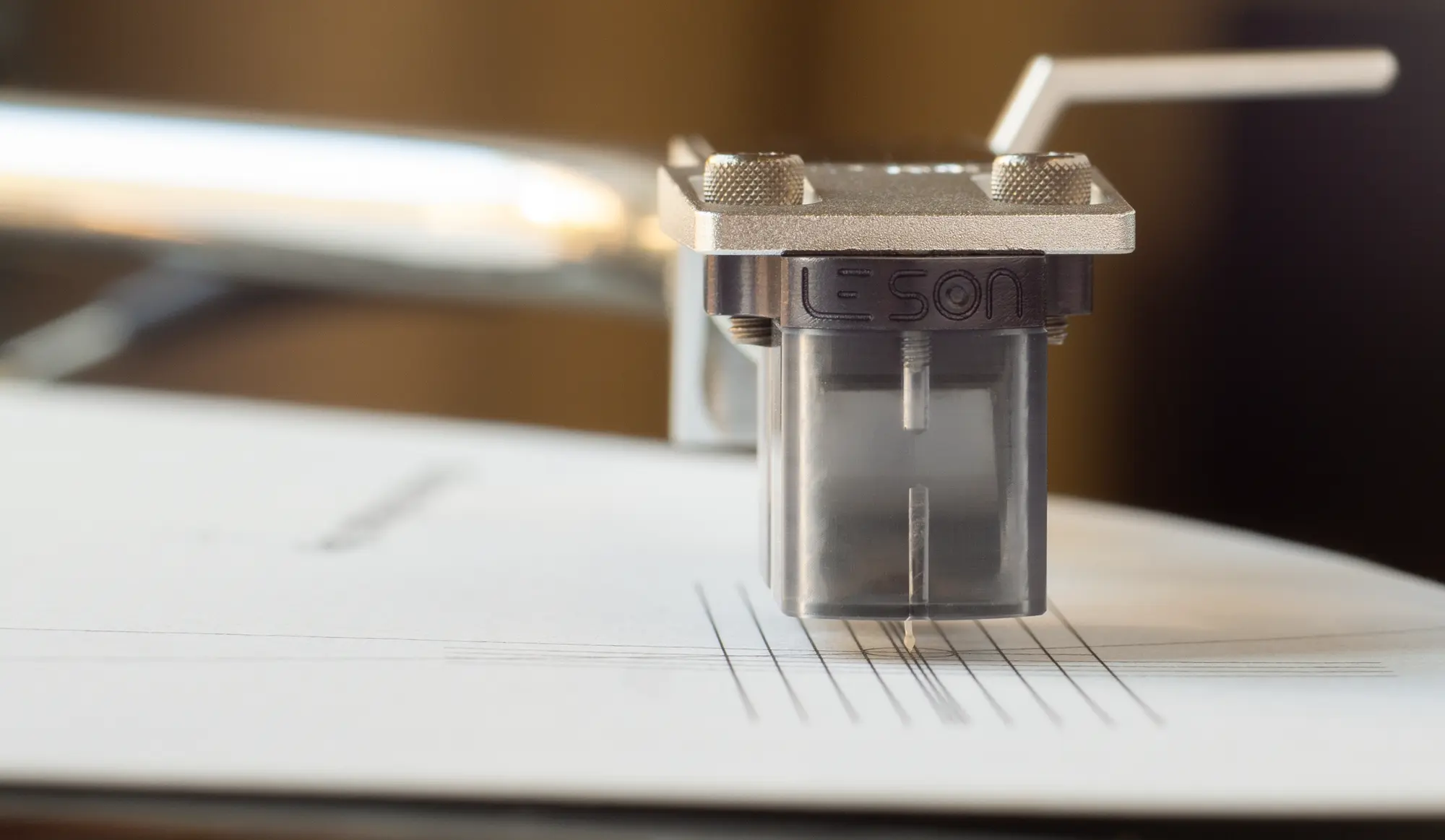Cartridge Alignment Protractor: Align Your Cartridge with Precision
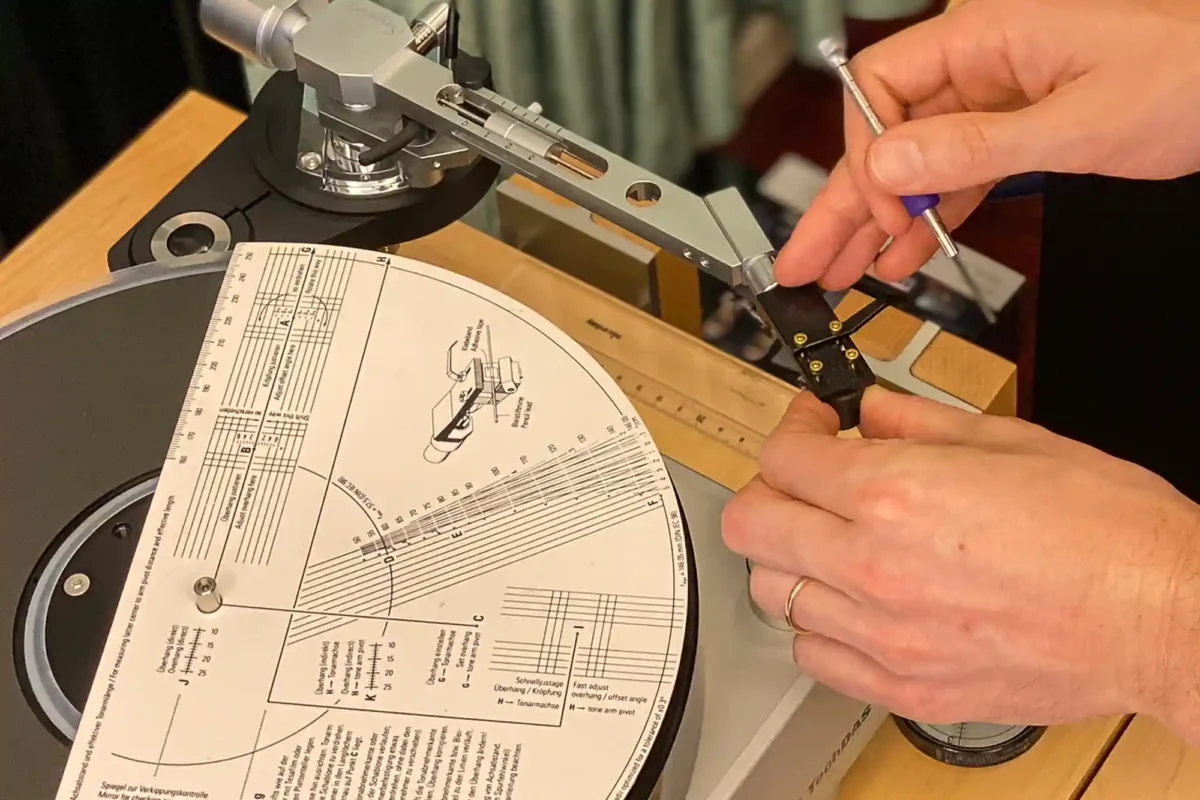
Introduction
Vinyl records are cut using tangential (linear) cutting heads, which carve perfectly straight grooves from the record outer edge to the inner.
However, the vast majority of turntables use pivoting tonearms, which swing across the record in an arc. This mechanical mismatch leads to tracking error: the stylus is only perfectly aligned with the groove at two points on the record. Everywhere else, a small angular misalignment causes distortion, especially near the inner grooves.
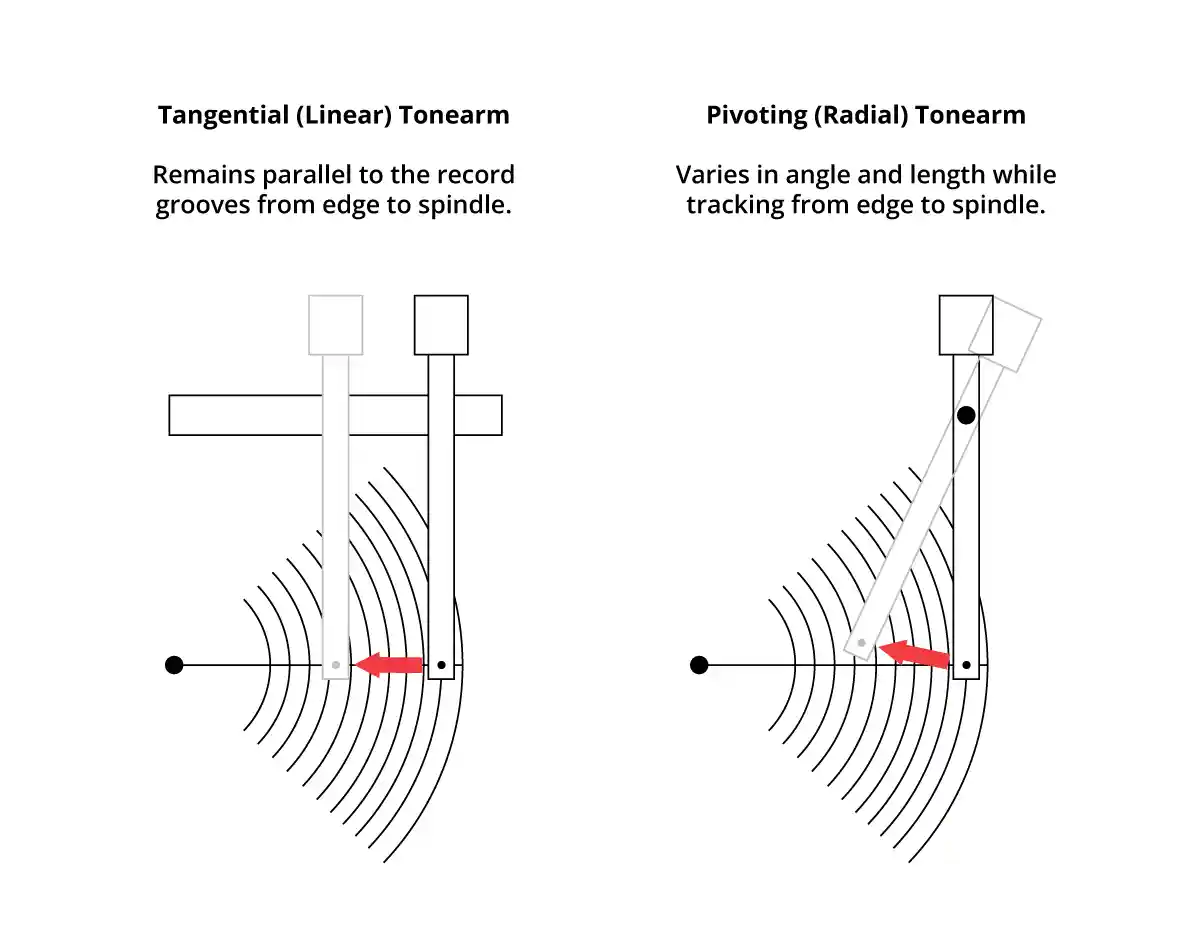
To minimize this tracking error and preserve the long-term integrity of both stylus and record, precise cartridge alignment is essential. That is exactly where a cartridge alignment protractor becomes the foundation of proper setup.
Why Cartridge Alignment Matters for Turntable Sound Quality
Correct cartridge alignment ensures that the stylus traces the groove as closely as possible to the original cutting angle. Misalignment can lead to:
❌ Channel imbalance and weakened stereo image
❌ Distortion, especially in loud or high-frequency passages
❌ Excess groove and stylus wear
❌ Poor inner groove performance
Even a premium cartridge can sound dull or harsh if misaligned. Proper alignment unlocks the full sonic potential of your system. It delivers cleaner sound, lower distortion, and longer stylus and groove life.
The Right Tool for the Job: The Cartridge Alignment Protractor
A cartridge alignment protractor is a precision guide, usually printed or machined, that helps you adjust:
⭐ Overhang: how far the stylus tip extends beyond the turntable spindle center
⭐ Offset Angle: how much the cartridge is rotated in the headshell
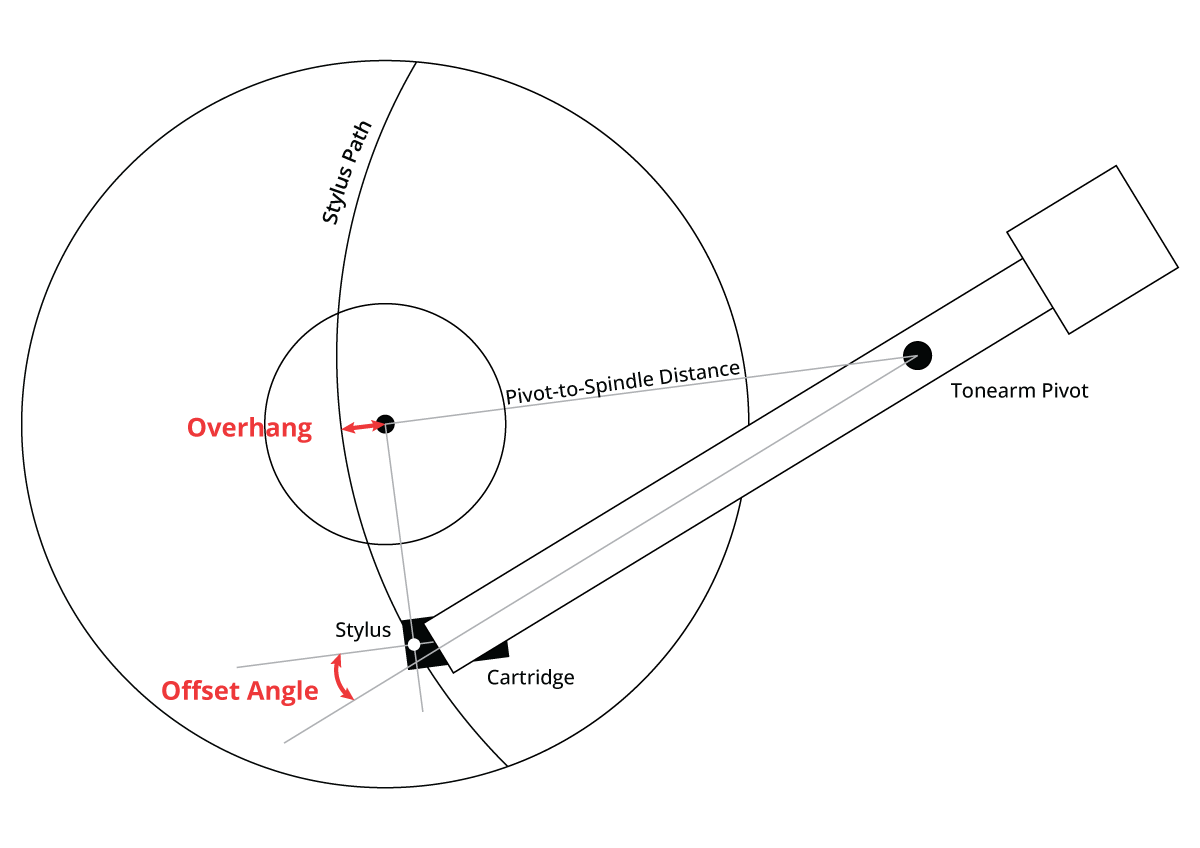
Together, these two adjustments reduce tracking error across the entire record surface. To perform them correctly, the cartridge alignment protractor relies on one of several mathematical alignment geometries, each designed to minimize distortion across the record in a different way. A well-designed protractor is the most essential cartridge alignment tool in any serious analog setup.
Main Types of Cartridge Alignment Protractors: Arc vs. Two-Point
1. Two-Point Cartridge Alignment Protractors (Universal Fit)
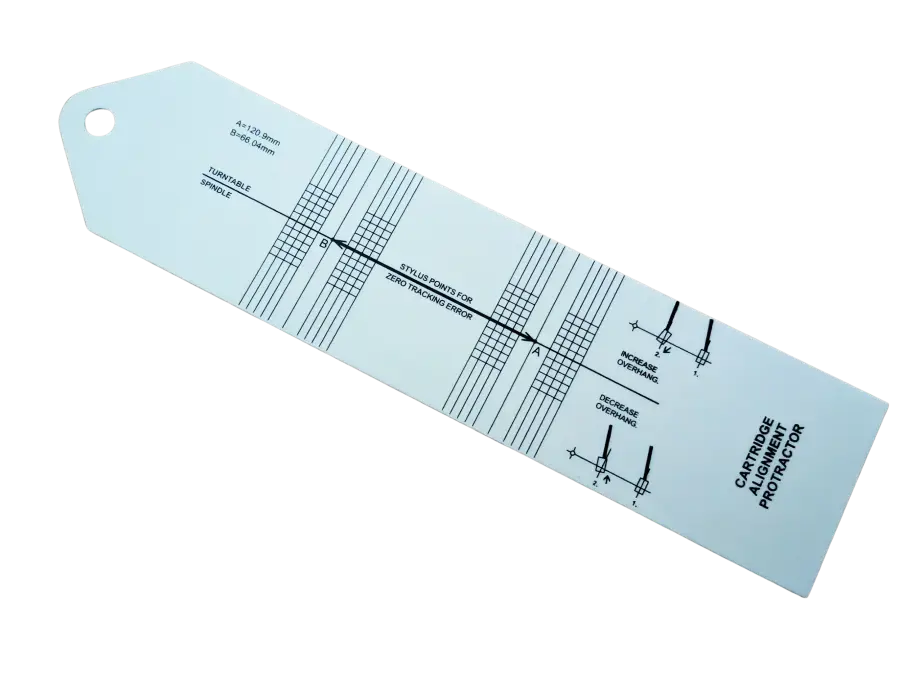
How it works: Align the stylus to two fixed null points (e.g., 66 mm and 120.9 mm for Baerwald). Adjust cartridge position and rotation until it’s tangential at both.
Pros:
➕ Works with almost any pivoted tonearm
➕ No need to know the arm’s pivot-to-spindle distance
➕ Widely available and printable
Cons:
➖ Requires careful visual alignment at both points
➖ Doesn’t guarantee proper arc tracing between them
➖ May conflict with some proprietary tonearm designs
This makes them a universal solution for many turntables lacking published geometry specs.
Note: Some tonearms (e.g., Rega, SME) have unique geometry. A standard 2-point protractor may not match their intended overhang and offset, even if alignment seems correct at both null points.
2. Arc Cartridge Alignment Protractors (Tonearm-Specific)
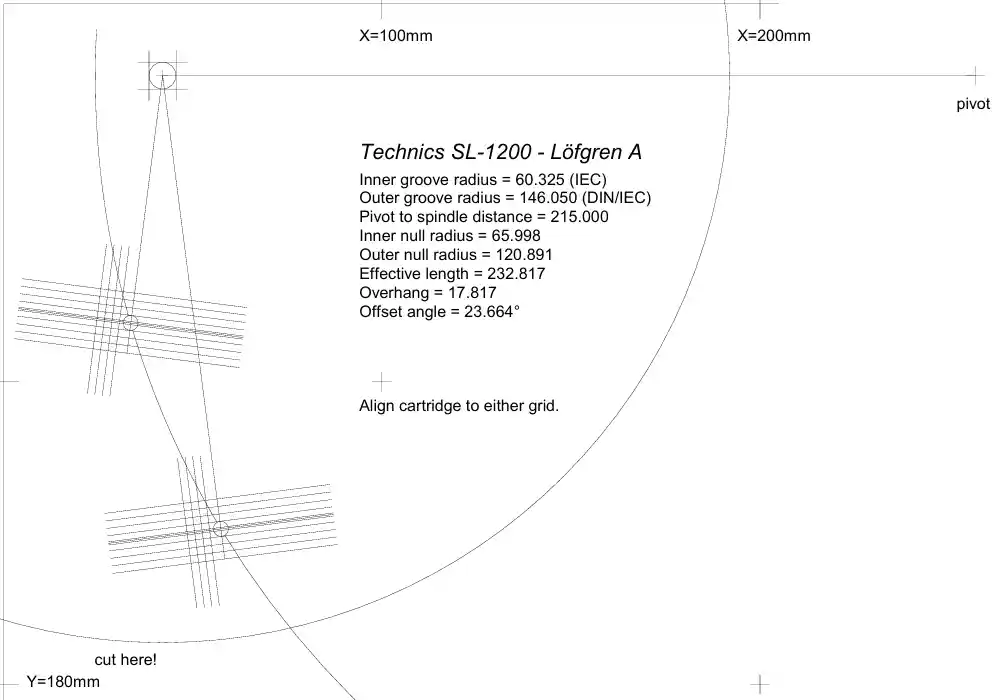
How it works: The stylus must precisely trace a printed arc that corresponds to your tonearm’s pivot-to-spindle distance and effective length. Alignment is confirmed when the stylus tracks the arc and aligns with the grid at the null point.
Pros:
➕ Confirms correct overhang and offset simultaneously
➕ More intuitive once the arc matches
➕ Higher precision if matched properly
Cons:
➖ Requires accurate knowledge of tonearm geometry
➖ Not universal
➖ Using an incorrect arc can result in misleading alignment
Note: Some manufacturers offer tonearm-specific protractors. These may differ slightly from standard Baerwald or Stevenson arcs. It’s best to match the arc to your tonearm’s specs when possible.
Which Cartridge Alignment Protractor Should You Use for Your Turntable?
At Le Son, we recommend using an arc protractor whenever possible.
Arc protractors offer superior accuracy compared to traditional two-point tools. Instead of only verifying tangency at two fixed null points, an arc protractor allows you to confirm that the stylus tracks the entire alignment arc defined by the chosen geometry (Baerwald, Löfgren B, Stevenson, etc.). This ensures proper alignment across the entire playing surface, not just at isolated positions.
They’re also easier and faster to use. Once your tonearm’s pivot-to-spindle distance is known, you can generate a precise arc protractor tailored to your setup. Simply adjust the cartridge, carefully adjusting the stylus position, until it traces the arc and aligns with the grids at one of the null points. There’s no need to jump back and forth between two points, reducing errors and saving time.
In short, arc protractors make cartridge alignment more accurate, more repeatable, and easy to use.
Understanding Alignment Geometry: Baerwald, Löfgren, and Stevenson
Cartridge alignment protractors are based on different mathematical formulas, known as alignment geometries. Each geometry defines two null points: the positions on the record where tracking error is exactly zero. These affect how distortion is distributed across the record surface.
Here are the three most common alignment methods used in turntable cartridge setup:
⭐ Baerwald (Löfgren A)
-
Balanced performance across the entire record
-
Null points at 66 mm and 120.9 mm
-
Ideal for most tonearms and music genres
-
Keeps distortion consistently low from start to finish
⭐ Löfgren B
-
Slightly lower average distortion overall
-
Null points at 70.3 mm and 116.6 mm
-
Prioritizes accuracy in the middle grooves
-
May slightly increase distortion at the very beginning and end
⭐ Stevenson
-
Focuses on minimizing distortion in the inner grooves
-
Null points at 60.3 mm and 117.4 mm
-
Ideal for records with dense music near the end, such as classical or long LP sides
-
Slightly higher distortion elsewhere, but cleaner sound at the record’s close
These geometries are all valid approaches to cartridge alignment, and your choice depends on your tonearm’s design and musical preferences.
How to Print and Use a Free Arc Cartridge Alignment Protractor for Your Turntable
If you’re ready to align your cartridge using a customized arc protractor, follow our step-by-step guide and generate your own PDF:
This tutorial includes:
⭐ How to measure the tonearm pivot to spindle distance
⭐ How to use Conrad Hoffman’s generator for Baerwald, Löfgren B, or Stevenson geometries
⭐ How to print, cut, and use your arc protractor for optimal results
Conclusion: Achieve Precise Alignment and Unlock Better Sound
Most turntables use a pivoted tonearm, which requires careful cartridge alignment. A well-aligned cartridge is one of the most important upgrades you can make, often more impactful than changing your cartridge or phono stage. Whether you choose a 2-point or arc protractor, taking the time to achieve precise alignment and recheck tracking force ensures:
✅ Lower distortion
✅ Longer stylus and record life
✅ Better imaging and musical realism
If you’re passionate about analog sound like us, don’t skip this step. It is the foundation of high-fidelity analog playback and the key to hearing music as it was meant to be heard.
Long live analog sound!
Join Our Community!
Subscribe to La Newsletter
Stay informed with the latest news and blog posts from the world of high fidelity sound.
Gregory de Richemont
Gregory de Richemont is the founder of Le Son, where high-fidelity sound meets emotional depth. Blending a background in global business with a lifelong passion for analog, Gregory left the corporate world to follow the call of pure sound. His work is dedicated to creating listening experiences that don’t just impress — they move. Learn more on our About Us page.


